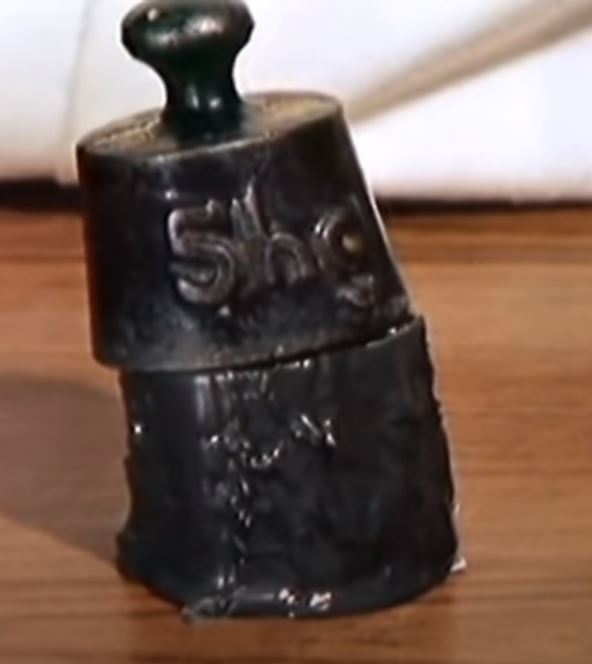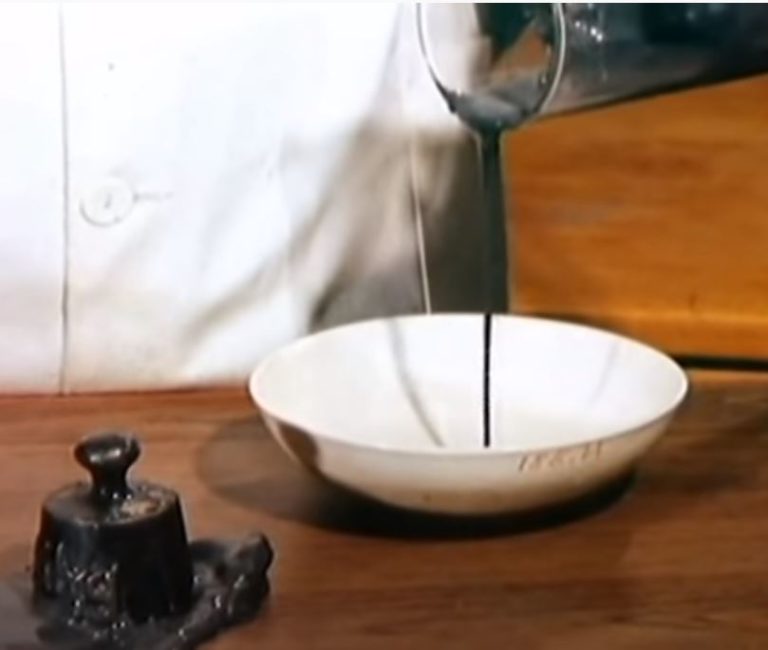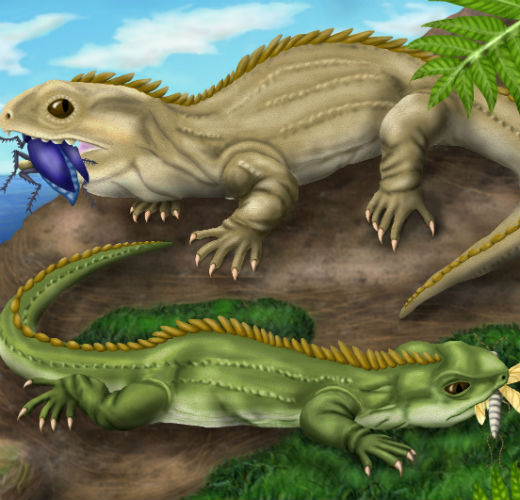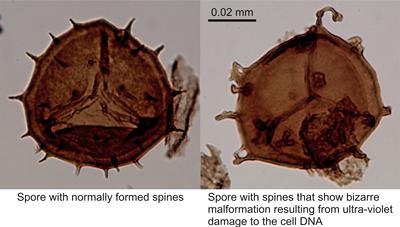Talks, field trips and events organised by west country geological organisations are publicised on this blog. Discussion about geological topics is encouraged. Anything of general geological interest is included.
Saturday 27 June 2020
Friday 26 June 2020
GeoConservation Newsletter
GeoConservation Newsletter
The latest edition of the GeoConservation NewsLetter has been released and you can get it HERE. Or you can read it below. It is packed (in several senses!) with material. There is a lot to read. A thought for the editor - not many people are going to print the newsletter, so waste of paper is not a consideration. Why not put more white space - blank lines between paragraphs, bigger type, spread things out.
But well worth reading.
But well worth reading.
Monday 22 June 2020
Quick Clay - a Reason to Avoid Norwegian Farm Holidays!
Quick Clay - a Reason to Avoid Norwegian Farm Holidays!
The Landslide Blog has come up with two fantastic videos from Norway. THE FIRST is of a recent landslide at Alta in northern Norway. Nothing much happens until 2 minutes 20 seconds in and then be amazed.
Apparently there are copyright issues with the video above. But you can see the same video HERE.
Apparently there are copyright issues with the video above. But you can see the same video HERE.
The SECOND VIDEO is much older - and it shows - but it gives the scientific explanation of Quick Clay Landslides. About two minutes in they give a vivid illustration of solid clay becoming liquid.
 |
| An intact block of quick clay being loaded to beyond its strength. |
 |
| Failure of the block of quick clay being loaded to beyond its strength. |
 |
| Remoulded behaviour of the block of quick clay being loaded to beyond its strength. No water was added! But it acts as a liquid. |
Fossil Reptiles not Picky Eaters
Fossil Reptiles not Picky Eaters
Not a surprising headline but a difficult one to verify. But a PhD student at Bristol has done so for a couple of species. A correspondent brought THIS ARTICLE to my notice, for which I am very grateful.
The student, Sofia Chambi-Trowell, CT scanned skulls of 200 Ma rhynchocephalians and worked out the bite forces and pressures their jaws could produce. And found them capable of eating the small mammals, reptiles and bugs in their environment.
The fossils came from Permo-Triassic fissure deposits in the Carboniferous Limestone.
Clevosaurus hudsoni could eat crunchier prey than Clevosaurus cambrica and this mirrored what was happening with the areas mammals which had been studied earlier. Presumably the two species could live side by side without encroaching on the others diet.
Mapping the Sea Floor
Mapping the Sea Floor
A correspondent has emailed THIS LINK which tells us of the progress being made in mapping the sea floor. So far 19% of the oceans floor has been mapped with a resolution of 100m or better.
There are a host of reasons to map the sea floor, many commercial but also scientific. The article discusses the many ways it is being done. The idea of a fleet of robotic surface vessels sounds very odd but may work well.
Mapping the sea floor is not high profile but will over the years prove to be invaluable.
The black (non-continental) areas are where coverage is poor.
Thursday 11 June 2020
Scottish Millipede - World's Oldest Bug!
Scottish Millipede - World's Oldest Bug!
A correspondent sent me the link to THIS ARTICLE which is based on THIS ARTICLE. But you need to pay to see the latter in full.
The interest in the find is that molecular clock calculations suggest that this millipede (an Arthropod) should have appeared at 500Ma - 75Ma before it actually did.
Obviously dates are important and the date of the specimen was found using the U/Pb method on zircons extracted from the sediment which contained the millipede. (With great care - pin glued to a pencil tip!). This was done for three UK sites.
The sites and ages were:-
Kerrera 425Ma (Kerrera is near Oban)
Ludlow 420Ma
Cowie 414Ma (Cowie is near Stonehaven)
The Rhynie Chert, which contains a diverse arthropod fauna, is 407Ma.
Google was able to supply this photo of a millipede said to be 425Ma.
Thursday 4 June 2020
Dinosaur Diet Revealed!
Dinosaur Diet Revealed!
A correspondent has sent me a link to THIS ARTICLE. It tells of a nodosaur, a type of ankylosaur, which fell into a stream and drowned. Its body was preserved in what is now an oil sands mine in northern Alberta, Canada.
Study of its remains revealed its stomach and that the contents were undigested and could be identified. It had dined on ferns (with spores), twigs, leaves and lots of charcoal. It had not eaten the widely available cycad and conifer leaves. The charcoal suggests that a forest fire had occurred recently.
 |
| I presume this is a nodosaur |
Wednesday 3 June 2020
Snowball Earth and the GOE
What Caused the First Snowball Earth?
THIS ARTICLE discusses the effects of the Great Oxidation Event (GOE). Did it occur before or after the first snowball earth? We know both occurred about 2.4 billion years ago.
The method used in this study is the ratios of sulphur isotopes. Post GOE these are stable and predictable but before this photochemical reactions in the oxygen-free atmosphere are preserved as unpredictable sulphur isotope ratios. So pre GOE unpredictable; post GOE predictable. Therefore measure sulphur ratios and find the date of the GOE.
Using cores of sedimentary rocks, of the appropriate age, from the Kola Peninsula, the researchers in St Andrews, pin the GOE to a 70 million year interval between 2.50 and 2.43 billion years ago. In this context, a very short period!
This is before the snowball Earth deposits. It is postulated that rising oxygen levels lowered methane levels, weakening the greenhouse effect, and leading to a major period of glaciation.
If we looked at the Earth before the GOE would we have thought it a good prospect for habitation? And removing greenhouse gases from the atmosphere is not without risk!
Postgraduate Diploma in ‘The Geology of Northern England’
Postgraduate Diploma in ‘The Geology of Northern England’
From various sources has come the following intelligence:-
-=-=-=-=-=-=-=-=-=-=-=-
The Postgraduate Diploma in ‘The Geology of Northern England’ programme, from Dr Annette McGrath.
To find out more about the PG Dip programme, please:
· Visit the website here
· Attend our Virtual Open Day on the 4th of June
· … or alternatively please feel free to directly respond to me, Amanda Pauw, Postgraduate Administrator at this email with any queries or to the Programme Leader, Dr Annette McGrath at annette.mcgrath@york.ac.uk
---------------------------------------
Dear Sir or Madam,
I hope this email finds you safe and well in these difficult and challenging times, and that you are managing to keep yourself suitably occupied and distracted.
On that note, I am writing to you now to raise awareness of the online Postgraduate Diploma (PG Dip) in ‘The Geology of Northern England’, run by the Centre for Lifelong Learning at the University of York, as I feel that it will be of interest to you. This part-time, two-year innovative programme is run entirely by distance learning via a virtual learning environment, and enables like-minded people to meet and engage online in a safe, friendly and flexible environment. The PG Dip programme has been going from strength-to-strength since its inception in September 2015, and we are currently taking applicants for a September 2020 start.
From the spectacular igneous geology of the Lake District World Heritage Site and Northumberland National Park and AONB, to the fascinating sedimentary geology of the Yorkshire Jurassic ‘Dinosaur Coast’ and the mineral wealth of the Pennines…. the North of England has an incredible geological history, spanning almost 500 million years.
Concentrating mainly upon the geological evolution of northern England, you will analyse and interpret key geological features and concepts to integrate regional knowledge into the interpretation of larger scale Earth processes and structures. You will assess the region’s importance in current and historical Earth science controversies and study human interactions with the rocks and landscapes of northern England from the Stone Age to the present day.
Whilst your studies will focus on the geological history of northern England there are also countless opportunities to focus your own reading and research on to other areas of the UK (and the wider World) – and you will be able to learn more about your own home region too, if desired.
The PG Dip also covers other significant and topical aspects of geology that are not necessarily encountered in northern England: for example the fascinating North Atlantic Igneous Province (aka the British Tertiary Igneous Province); the sudden global warming and extinction event that resulted in the Palaeocene-Eocene Thermal Maximum (PETM)… and much more.
The online format offers you the opportunity to study in your own home, at your own pace, whilst also being extensively supported by an experienced Lecturer. You will also have the opportunity to participate weekly (but to suit your own lifestyle and time constraints) in a lively, supportive and scholarly online community. The programme also includes a mandatory residential week* at the beginning of each year, which provides an opportunity to meet the Lecturer, network with fellow students, engage in class-based study activities and spend time out in the field, examining Yorkshire’s geology up close. (* Please note that the face-to-face element of the residential week course is subject to the Covid-19 restrictions at the time, and will be in line with wider government and university advice and policies).
The PG Dip programme offers graduates a strong foundation for any kind of vocational or geological/non-geological career path. On completion of the programme, graduates are well-prepared for geological careers within research, academia, teaching, museums, archives, government organisations or research councils. Graduates are also well-equipped to pursue employment within industry, such as the oil, gas and petroleum sector, natural hazards, the groundwater and hydrogeology industry, environmental geology and contaminated land, mining, quarrying, engineering geology and construction companies.
Should your circumstances change, you can end your studies after one year and graduate with a Postgraduate Certificate. You're also able to carry credits on to a Masters course at the Open University if you wish to take your studies further.
The programme starts in late September, concurrent with each new academic year – places are limited to ensure a constructive atmosphere for discussions.
So apply now to uncover the extraordinarily diverse landscapes and geological history of northern England!
Best Wishes – and stay safe.
Annette
Dr Annette McGrath
BSc Hons, ARSM, MSc, PhD
Associate Lecturer and Programme Leader Postgraduate Diploma in ‘The Geology of Northern England’
Honorary Research Fellow University of Leicester: https://www2.le.ac.uk/departments/geology/people/mcgrath-a
Geology Tutor Higham Hall Adult Education College: http://highamhall.com/organiser/annette-mcgrath/
Email: annette.mcgrath@york.ac.uk Twitter: @AnnetteMcGrath7
Monday 1 June 2020
Broken Ozone Layer Caused End Devonian Mass Extinction
Broken Ozone Layer Caused End Devonian Mass Extinction
A correspondent brought THIS ARTICLE to my attention. It reports on field work in Greenland and Bolivia by scientists from Southampton University School of Ocean and Earth Science.
They looked at spores and discovered that they were malformed, indicating damage by ultra-violet radiation. Today the ozone layer protects us from such radiation and they surmise that today's conditions are similar those of the late Devonian. A similar collapse of the ozone layer could have deadly consequences.
Two Short Geological Field Trips with Nick Chidlaw
Two Short Geological Field Trips with Nick Chidlaw
Nick Chidlaw is offering to lead a couple of field trips following all the Covid-19 Rules. All the details are below. Responses are required by 3rd June.
-=-=-=-=-=-=-=-=-=-=-=-=-=-=-=-
Dear All,
As you know, the Westminster and devolved UK governments have begun various measures to bring some relieve to the continuing social and economic lockdown. This varies across the countries of the UK, and is being implemented with necessary caution: a return to full lockdown will be essential, either locally or nationally, if C-19 cases begin to rise again.
Lockdown has been quite an ordeal for many people, not least those who enjoy being out in the field, such as students and tutors of geology. I have been very pleased that the ‘Lockdown Geology’ quiz I offered in late April had a good response, and the work received was of very high quality. I am also very gratified that the two distance–learning courses I’ve proposed recently have generated an encouraging response, and hopefully both of these will become viable by their June 10th deadline.
You’ll have heard that from this coming Monday (1st June), in England, groups of up to 6 people from as many households – practising social distancing – will be permitted to meet in outside locations.
I am happy to take this opportunity for us to get out into the field again and do some geology, albeit in a limited way.
I am proposing the following:
* Cleeve Cloud Short Geological Field Trip
* Selsley Common Short Geological Field Trip
‘Cleeve Cloud’ is close to the crest of the Cotswold escarpment to the east of Cheltenham, and has both excellent extensive rock exposures (a variety of limestones, Middle Jurassic) and dramatic views across the Severn Vale to the varied landscapes of the Welsh Borderland, including the Forest of Dean and the Malverns. The jpg attached shows part of the exposures at Cleeve Cloud.
Selsley Common is located on the crest of the Cotswold escarpment near to the town of Stroud, has numerous rock exposures in small disused quarries (a variety of limestones, Middle Jurassic), and excellent views westwards somewhat similar to those seen from Cleeve Cloud. The jpg attached is of a Google Earth oblique image of Selsley Common, showing its pitted surface from old shallow quarry workings. The most informative exposure is away from these, close to the wood in the top right part of the image. Stroud is off to the left (north) side of the image.
Both these locations are very suitable for ‘social distancing’ – they are provided for by ample extensive parking spaces, and open, almost treeless ground where people can spread out easily and not be restricted (such as on narrow footpaths bracketed by fences, walls or trees).
I have run field trips to these locations many times in the past, and know them well.
The aim of these short field trips is to provide some field geology for those who are keen to get out again, while exercising at all times appropriate measures to keep themselves and others safe re. C-19. Anyone who would rather not attend in view of their concerns regarding C-19, I would certainly appreciate this.
No fees would be required to attend these short field trips.
There would be no handouts prepared for attendees on these field trips – it would be a case of me describing the geology from my own notes, and pointing out features in the field; attendees could bring their own notebooks / pencils to record details, take photographs and collect any specimens they wish (I would break up any loose rock material for you to collect from).
There would be no insurance cover for attendees on these trips: the insurance cover I usually have for my courses and trips is to be renewed once these can run again. Attendees would be advised to wear hard hats when close to overhead rock exposures; ideally they would bring their own, but I can lend some to those who do not have one. Summer clothing would be worn, so bringing a windproof top or sweater would be a good idea in case needed at any point. Suitable headwear (e.g. bush hat) when away from rock exposures would be useful for protection from strong sunshine. Suitable footwear with good tread and ankle support would be advised.
On the field trips we would, as normally, follow good Health & Safety practise. In the unlikely event of injury, both field localities have easy access for an ambulance, should this be necessary.
Organisation
Each trip would have, as necessary, only 5 attendees. Trips would be repeated in order to accommodate those who may wish to attend.
We would meet at a stated parking location (I will email sketch map and postcode for satnav), and from there walk to the start of the rock exposures to be examined. For Cleeve Cloud, the walk would be approximately 20 minutes there, and 25 – 30 minutes back. For Selsley Common, the walk to the first exposure is less than 5 minutes, and c. 10 minutes back from the last exposure. Walking surfaces are well-trodden footpaths and grassy common land with a mix of undulating ground and locally steep slopes.
Because of the lockdown, there will be no opportunities to visit pubs for refreshments and use of their facilities. Any public loos will be locked to prevent the possibility of C-19 infection. Ideally, aim to use your loo at home before you travel to the field area. We can find ‘al fresco’ opportunities if necessary.
Bringing your own refreshments, such as flask of coffee or tea, fruit juice, water would be a good idea.
The Cleeve Cloud trip would extend for 3 hours (includes walking time from the car parking area and back).
The Selsley Common trip would extend for 3 hours (includes walking time from the car parking area and back).
Dates in June
We are currently enjoying an extended dry warm sunny spell, and the dry weather (becoming more cloudy and a little fresher) is forecast to continue for at least a week or two; some minor showery spells might develop.
My thinking is we therefore act soon, to take advantage of the continuing dry spell.
Weekday afternoons and, particularly, evening times would be useful, to minimise the numbers of people who might be using the car parks and walking in the areas of interest. Sunset is well after 9 pm now.
Arrival times at the car parks would be from 1.40 pm for the afternoon trips and from 5.40 pm for the evening trips.
Date Options:
DATE AFTERNOON 2 – 5 pm EVENING 6 – 9 pm
Friday 5th Selsley Common trip Cleeve Cloud trip
Monday 8th Selsley Common trip Cleeve Cloud trip
Tuesday 9th Selsey Common Trip Cleeve Cloud trip
Choosing a date
Using the above 3 dates and offering both field trips on each day, potentially caters for a maximum total of 30 people (assuming no one attends more than one trip). Additional dates later in June or further into the summer could be organised if there is sufficient interest.
If you would like to attend one of these field trips, let me know which location you would prefer to attend, and on which date. Give me your first choice of location / date, and your second choice of location / date, and I will aim to provide as many people with their preferences as possible.
Necessarily, I will need to operate on a first come, first served basis. If there is a good response to this proposal, and you find you cannot be catered for, I will organise some new dates for later in June or beyond to see what we can sort out.
Please get back to me by next Wednesday (3rd June), and I will organise the trips according to the level of response received.
Any queries, do let me know.
I hope this proposal is of interest to you, and to hear from you soon!
Regards,
Nick C.
Subscribe to:
Posts (Atom)



